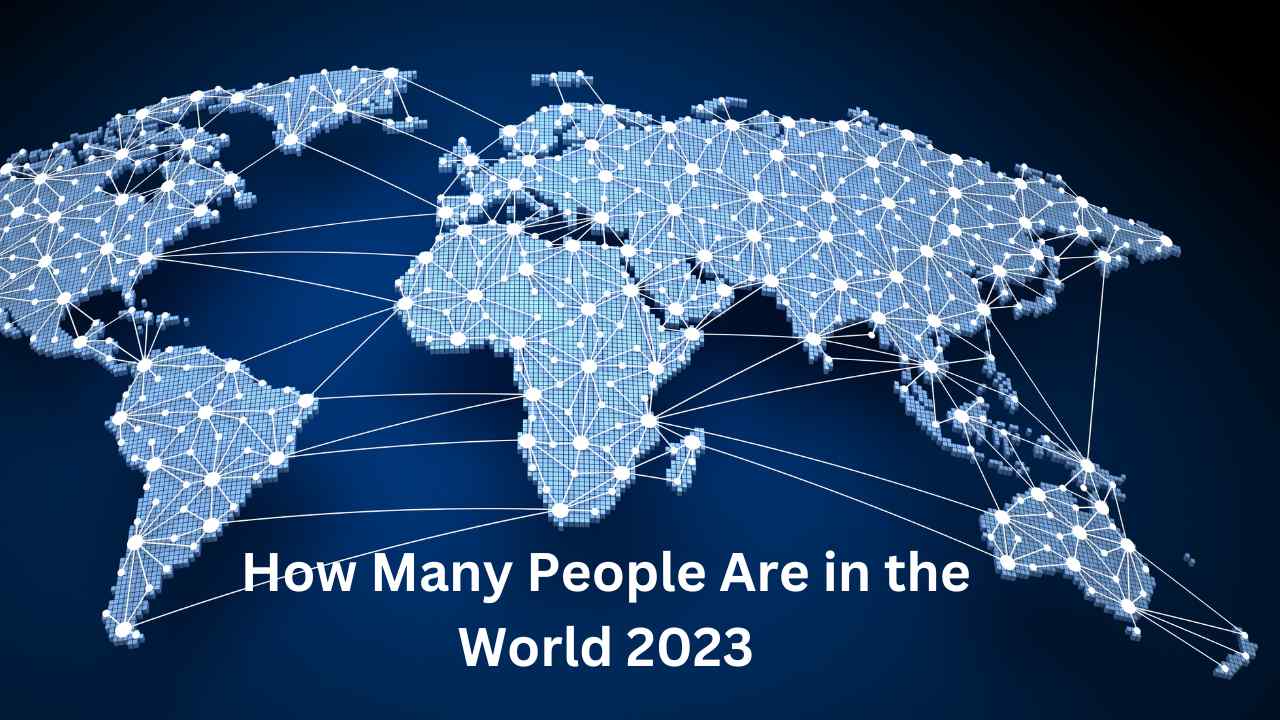As the question is rising, How Many People are in the World in 2023? The world population is expected to reach 8.5 billion in 2023, an increase of 700 million people from its current 7.7 billion. In fact, the increase is equivalent to the population of the third-most populous country in the world, the United States.
Global population growth is expected to slow in the coming years and will plateau at around 10.9 billion people by the end of the century, according to the United Nations. A significant portion of this population growth will be driven by rapid growth in the developing world, where the population is growing at a faster rate than the global average.
With its population expected to double by 2023, Africa is expected to be the fastest-growing continent over the next few decades. Asia and Latin America are also expected to experience rapid growth.
In different countries, population growth will vary. Some countries, such as China, are expected to experience a decline due to factors such as low fertility rates and aging populations. A young population and high fertility rate are expected to drive rapid population growth in other countries, such as India and Nigeria.
How Many People are in the World in 2023
Approximately 8.5 billion people will live on this planet by 2023, driven largely by the developing world. This population growth must be managed sustainably.
Increase in Population 2023 – Top Countries
You can compare How Many People are in the World in 2023 that are increasing in population continually fast.
India
An estimated 332 million people have been added to its population since 2010, making it the most populous country in the world. In 2024, India’s population will overtake China’s.
Nigeria
A population of over 200 million, China is the world’s second-fastest-growing country. 2050 will see Nigeria become the third-largest country in the world.
The United States
With over 23 million new residents since 2010, it is the third-fastest growing country.
Pakistan
Currently the fourth-fastest-growing country in the world with a population of over 112 million since 2010.
Bangladesh
With an increase of over 61 million people since 2010, it ranks fifth in population growth.
With over 33 million new residents since 2010, Ethiopia has become the world’s sixth fastest-growing country.
Its population is estimated at over 85 million, making it the seventh fastest-growing nation.
Over 37 million people have been added to the Philippines’ population since 2010.
Since 2010, Uganda’s population has grown by over 34 million, making it the ninth fastest-growing nation.
A population increase of over 20 million since 2010 makes Egypt the world’s tenth fastest-growing country.
High Birth Rates Countries
Increased birth rates, increased life expectancy, and migration all contribute to rapid population growth in these countries. High birth rates lead to population growth in some countries, such as India and Nigeria. Immigrants have led to population growth in other countries, such as the United States and the Philippines.
There are positive and negative impacts of rapid population growth. Economic growth and productivity can be increased by an increased population. Overcrowding and pollution can also result from rapid population growth, which can strain resources and infrastructure.
Taking appropriate steps to manage population growth is important for governments. Families need access to family planning, quality healthcare, and job opportunities to meet their needs as the study of the population grows. The government should also invest in infrastructure to meet the needs of a growing population. However, in How Many People are in the World in 2023, the answer is in queue until 2024 to finalize approximately digits.

